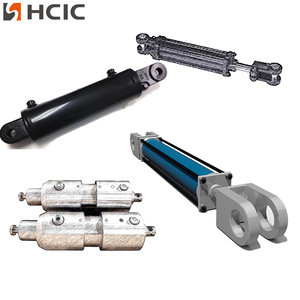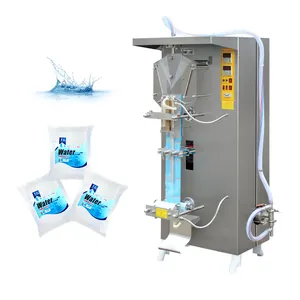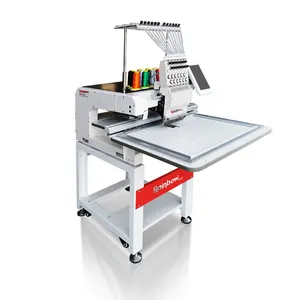Popular in your industry










































































Related Searches:































































































































































Top categories
About forklift hydraulic piston
A forklift hydraulic piston is a critical component in the lifting mechanism of a forklift, enabling precise control and movement of the forklift's mast. These pistons are designed to withstand high pressure and are integral to the forklift's ability to lift and move heavy materials efficiently. With a focus on the forklift hydraulic piston, this introduction will delve into the various aspects of this essential forklift part, providing business buyers with a comprehensive understanding of its features, applications, and maintenance.
Types and Characteristics of Forklift Hydraulic Pistons
The forklift hydraulic piston category encompasses a variety of types, each with unique characteristics tailored to specific operational needs. Piston cylinders, general cylinders, series cylinders, rotary cylinders, and digital cylinders represent the spectrum of designs available. The piston cylinder is the most common type, used in standard forklifts for basic lifting tasks. General cylinders are versatile and can be applied in a range of forklifts, while series cylinders are designed for synchronized actions in complex lifting systems. Rotary cylinders offer rotational movements, and digital cylinders are equipped with sensors for precision control in high-tech applications. Each type presents a different set of capabilities, ensuring that there is a suitable piston for every forklift requirement.
Structure and Operation of Forklift Hydraulic Pistons
The structure of a forklift hydraulic piston is meticulously crafted to facilitate efficient operation. At its core, the piston is housed within a cylinder barrel, where it moves back and forth. This movement is achieved through the pressurization of hydraulic fluid, which is controlled by a series of valves. The piston rod connects to the forklift's mast and is responsible for the lifting action. Seals and rings ensure that the hydraulic fluid does not leak, maintaining the system's pressure and effectiveness. The assembly may also include a cushioning mechanism to smooth out the movement at the end of the piston stroke, thereby reducing wear and tear and enhancing the lifespan of the piston.
Materials and Properties
The choice of materials for a forklift hydraulic piston is critical, as it must possess properties that ensure durability and reliability. Steel is favored for its tensile strength and endurance, making it ideal for heavy-duty applications. Aluminum, being lightweight, is chosen for applications where the forklift's overall weight is a concern, such as in indoor warehouses where floor loading is limited. Stainless steel is selected for its corrosion resistance, essential in environments where the piston is exposed to corrosive substances or extreme cleanliness is required. The benefits of these materials include extended equipment life, reduced maintenance costs, and consistent performance in various operational conditions.
Business Usages and Applications
Forklift hydraulic pistons are pivotal in a multitude of business settings. In manufacturing plants, they are essential for moving raw materials and finished goods, while in construction, they are used to lift and position heavy building materials. Building material shops utilize them to manage inventory, and farms employ them for handling large bales and other agricultural products. These pistons create business value by enhancing productivity, ensuring safety in material handling, and providing the versatility needed to perform a wide range of tasks efficiently.
Functions and Tasks
The primary function of a forklift hydraulic piston is to convert hydraulic energy into mechanical force, enabling the forklift to perform tasks such as lifting, lowering, and tilting loads. This functionality is crucial in warehouses for stacking pallets, in docks for loading and unloading cargo, and in construction sites for moving building materials. The precise control offered by the hydraulic piston allows for smooth operation, which is essential for handling delicate or unstable loads.
Features and Unique Selling Points
The features of a forklift hydraulic piston include high-pressure endurance, leak-proof seals, and the ability to withstand continuous use. These features are complemented by unique selling points such as customizability for nonstandard applications, the inclusion of smart technology in digital cylinders for enhanced precision, and the availability of various sizes to fit different forklift models. These characteristics set them apart from competitors by offering tailored solutions that meet the specific needs of businesses.
Benefits and Positive Outcomes
The benefits of using a forklift hydraulic piston are manifold. They provide a reliable lifting mechanism that ensures operational continuity, reduce the risk of downtime due to their robust construction, and offer scalability for businesses as they grow and their material handling needs evolve. The use of a hydraulic piston in forklifts also contributes to workplace safety, as it allows for controlled and stable movement of heavy loads, thereby minimizing the risk of accidents.
How to Use and Maintain Forklift Hydraulic Pistons
Effective operation of a forklift hydraulic piston involves regular checks for hydraulic fluid levels and potential leaks. When using the piston, operators should adhere to the forklift's load capacity and avoid abrupt movements to maintain system integrity. Maintenance includes routine inspection of seals and replacement if wear is detected, as well as periodic replacement of hydraulic fluid to prevent contamination. Proper cleaning and lubrication of moving parts are also essential to prevent rust and ensure smooth operation.
Choosing and Installing the Right Piston
Selecting the right forklift hydraulic piston requires an understanding of the forklift's specifications and the tasks it will perform. Considerations include the piston's pressure rating, stroke length, and mounting style. Installation should be carried out by a professional to ensure correct alignment and secure fitting, which is critical for the safe and efficient operation of the forklift. Following the manufacturer's guidelines will ensure that the piston is installed correctly and functions as intended.
Target Audience and Meeting Needs
The target audience for forklift hydraulic pistons includes businesses in industries such as logistics, manufacturing, construction, and agriculture. These products are designed to meet the needs of businesses that require reliable and efficient material handling solutions. By offering a range of pistons with different characteristics, manufacturers can cater to the specific needs and preferences of their diverse clientele, ensuring that each business can find the ideal piston to optimize their operations.
What are the maintenance requirements for a forklift hydraulic piston?
Maintaining a forklift hydraulic piston is essential to ensure its longevity and proper functioning. Regular inspections should include checking for leaks, ensuring that seals and rings are intact, and verifying that the hydraulic fluid is at the correct level and is not contaminated. Pistons should be lubricated regularly, and the hydraulic system should be flushed periodically to remove any build-up of debris or contaminants.
How does the forklift hydraulic piston adapt to different working conditions?
A forklift hydraulic piston is designed to adapt to a variety of working conditions. The choice of material and the design of the piston play a significant role in its adaptability. For instance, stainless steel pistons are better suited for corrosive environments, while aluminum pistons are ideal for applications where weight is a critical factor. Additionally, the sealing systems within the piston can be tailored to handle different temperatures and types of hydraulic fluid.
What should be considered when selecting a forklift hydraulic piston?
When selecting a forklift hydraulic piston, several factors should be considered. The load capacity of the forklift, the type of materials being handled, and the environment in which the forklift operates are all crucial. It's also important to consider whether a standard or nonstandard piston is required and to ensure that the piston is compatible with the existing hydraulic system. Lastly, the quality of the piston's materials and the reputation of the manufacturer can greatly influence the performance and reliability of the piston.




























